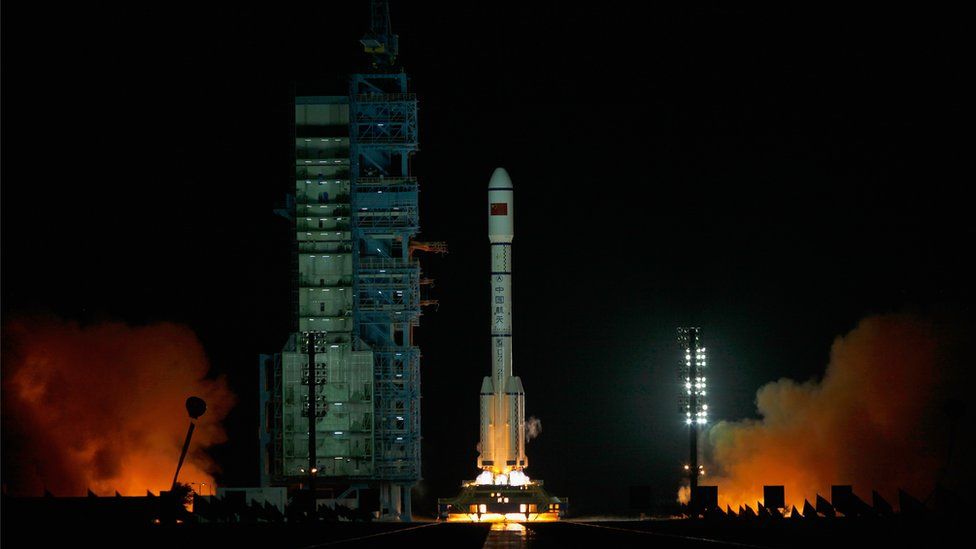China space station to fall to Earth in 2017
- Published

China's first space station is expected to fall back to Earth in the second half of 2017, amid speculation authorities have lost control of it.
The Tiangong-1 or "Heavenly Palace" laboratory was launched in 2011 as part of an ambitious Chinese plan to catch up with other space powers.
However, a senior space official has said the lab had "comprehensively fulfilled its historical mission".
The lab is currently intact and orbiting at 370km above ground.
Speaking at a press conference last week, Wu Ping, deputy director of the manned space engineering office, said: "Based on our calculation and analysis, most parts of the space lab will burn up during falling."
She added that it was unlikely to affect aviation activities or cause damage to the ground.
But in comments reported by the Guardian newspaper, Dr Jonathan McDowell, an astrophysicist at Harvard University, suggested China might have lost control of the station.
"You really can't steer these things," he said. "Even a couple of days before it re-enters we probably won't know better than six or seven hours, plus or minus, when it's going to come down.
"Not knowing when it's going to come down translates as not knowing where its going to come down."
Most of the 8.5-tonne station would melt as it passed through the atmosphere, Dr McDowell commented, but some parts such as the rocket engines, were so dense they might not burn up completely.
Earlier this month, China launched its second trial space station, called Tiangong-2, in a bid to operate a crewed outpost in orbit by 2022.